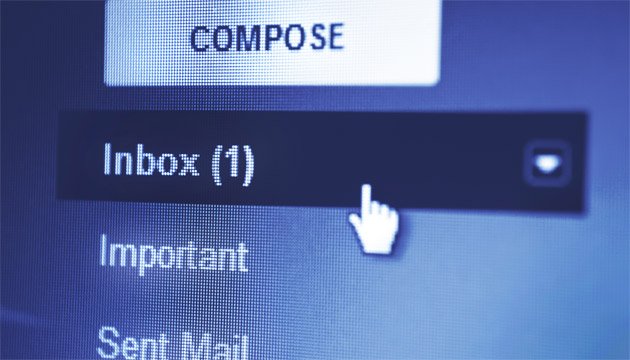
Email is making you poor and unproductive
If you run your own business, email has probably killed more revenue, brain function and productivity than you can imagine. In case you were wondering though, people have measured the costs of this WMD, or Weapon of Mass Distraction. So before I offer some ways to get out of harm’s way, let’s assess the damage and figure out how we arrived here.
The Email Toll in Numbers
If you think email is innocent, think again. In terms of money, mental health and productivity, email is dangerous.
Dr. Ian M. Paul, a pediatrician at Penn State College of Medicine, found that his university sent 2,035 mass emails per year. Taking into account 30 seconds of reading time per email and the average physician salary, Dr. Paul calculated that email bombardment cost $1,641 per physician per year – multiple that times 629 doctors, and email stole $1 million worth of time from people who save lives.
If you think you can handle all the distractions – since you’re a great ‘multitasker’ – think again. As Dr. Clifford Nass, a psychology professor at Stanford, explained in an NPR interview, “The research is almost unanimous, which is very rare in social science, and it says that people who chronically multitask show an enormous range of deficits…[they] can’t filter out irrelevancy. They can’t manage a working memory. They’re chronically distracted.” If we train our mind to constantly switch between our work, social media, email and other distractions, we’re training our brain to function sub-optimally. Put in other words, email can make you dumber.
And according to Intel’s War on Information Overload: A Case Study , produced by IT research and consulting firm Basex, too much emailing is expensive. Information overload costs the U.S. economy $900 billion per year when you factor in the unnecessary disruptions and resultant recovery time. For a single distraction, recovery to an optimal work level can take as long as 10 to 20 minutes. The smart folks at McKinsey & Company also found that knowledge workers spend 28% of their week reading and answering emails. When you combine distraction recovery with the irrelevance of most emails with the time spent managing them, the picture is grim.
How Email Turned into WMDs
The problem with email is that we have an imbalance between those who send email and those who receive it. When email was rising in the 1990s, people only sent emails that they typed. This naturally limited the amount of emails and the amount of content in each message. Now, thanks to the dot com explosion, companies have highly sophisticated tools for blitzing your inbox. Their collection methods, templates and personalization technology keep your inbox on the defensive. It’s like a faceoff between a modern army with nukes (WMD) and Stone Age villagers hiding behind a wall.
Grey mail, also known as ‘bacn’ (not spam), is at the heart of the problem. It’s all the email you’ve wittingly and unwittingly elected to receive, but usually don’t want or need to read. LinkedIn evites, Facebook notifications, Bed Bath & Beyond coupons, B2B marketing blah and newsletters grow and regrow like weeds between all the flowers. And no matter how many times you hunt down the little grey unsubscribe button, you can never seem to cut all the bacn.
Disarming Email
I wish the solution was simple, but we’ve created a complex problem. Most knowledge workers have developed coping mechanisms such as elaborate folder systems, email filters and sorting techniques. People take pride in a clean inbox, even though like Sisyphus, they have to push the boulder all the way back up the hill soon enough. Some companies have migrated internal communication from email to social networks like Yammer, but these solutions don’t work for external communications. You can’t have clients or customers accessing a social network where your employees have private conversations and exchange sensitive data.
So as you continue to play with techniques and try new email technology, I urge you to try some practical measures. Think of this as “email boot camp.” What I’m suggesting will prove surprisingly difficult:
1. Interval Training
Instead of letting email notifications run your day, set strict time limits between spurts of email checking and answering. If you email checking problem is really bad, start with short intervals: no more than every 15 or 20 minutes. As you master the short intervals, kick up to hour or hour and a half intervals. I promise the world won’t end and people will not flip out if you wait an hour and half to respond. If you need something to forcibly restrain you from email checking, install Freedom and Anti-Social on your computer. Between the two, you can digital restrain yourself.
2. Tw-email
The genius of Twitter is that it limits communication to 140 characters. Use it as your new model for emailing. Instead of writing a generic subject like “Hey” or “Read This,” put your entire message into the subject line. This will train you to be more concise. Your check and answer sessions will be quicker too.
3. Collaboration Software
For all internal file sharing, switch to Dropbox, Box, Google Drive or something else that gets the job done without stuffing email inboxes. Especially if you’re going to edit documents with a large group of people, the back-and-forth emailing will drive you all insane. Just don’t set your collaboration apps to spam everyone with email, otherwise it defeats the whole purpose.
For the near future, we are stuck with email. That does not mean we should accept the damage to revenue, brain health and productivity. As email client technology improves, I have hope that we can transform email from a Weapon of Mass Distraction back into an elegant communication tool. Resist the temptation to be perpetually distracted, explore your technological options for reining in email and fight back against WMDs – email is just one of many.
___
Dave Baggett is the CEO of Arcode Corporation, which he founded in 2008. Arcode’s first product – Inky is revolutionizing the email user experience by making email smarter, simpler and safer.








